Mastering Clothing Photography: A Comprehensive Guide for Aspiring Fashion Photographers
Updated on
In the fast-paced world of fashion, striking visuals are more than just eye candy; they are essential tools for storytelling and brand identity. Did you know that 90% of consumers say that high-quality images are crucial when deciding to purchase clothing online? As a fashion photographer, I've witnessed firsthand how captivating imagery can elevate a brand and drive sales.
In this comprehensive guide to clothing photography, we will explore the art and science behind capturing stunning images of garments. Whether you're an aspiring photographer looking to break into the fashion industry or a brand owner seeking to enhance your visual marketing strategy, this post is designed to provide you with valuable insights and practical tips. From understanding the various types of clothing photography to mastering essential techniques and equipment, we'll cover everything you need to know to create compelling images that resonate with your audience.
So, grab your camera and let's dive into the fascinating world of clothing photography!
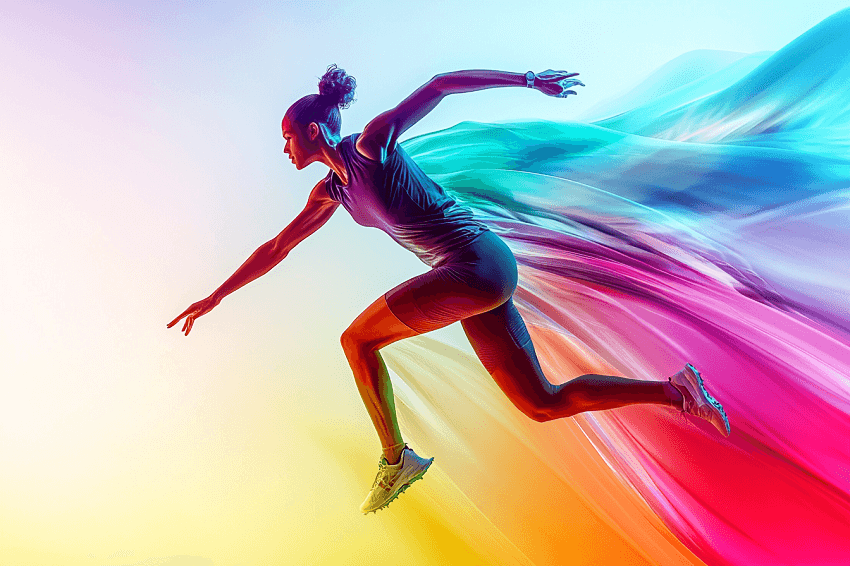
- Accurate subject separation with transparent details and fine edges in a click
- Produce smooth, gradient-based alpha edges for natural background blending
- Obtain the original quality. Upscale/enhance images to maximize quality with AI
- Provide an AI-powered brush for quick, easy, and flexible manual adjustments
- Bulk processing. Run entirely locally to ensure user data privacy and security
Part 1. Understanding the Basics of Clothing Photography
Clothing photography is a specialized genre that focuses on capturing garments in a way that highlights their design, texture, and overall appeal. It plays a pivotal role in fashion marketing, particularly in e-commerce, where consumers rely heavily on visuals to make purchasing decisions. Understanding the fundamentals of clothing photography is essential for anyone looking to excel in this field.
At its core, clothing photography involves not just taking pictures of clothes but presenting them in a way that tells a story and evokes emotion. It's about showcasing the unique features of each garment, whether it's the intricate stitching of a dress or the vibrant colors of a jacket. Effective clothing photography can create a connection between the product and the consumer, making it an indispensable tool for brands.
Types of Clothing Photography
There are several styles and techniques within clothing photography, each with its own strengths:
1. Flat Lay Photography: This technique involves arranging clothing items on a flat surface and capturing them from above. Flat lays are popular for showcasing complete outfits or collections and are particularly effective on social media platforms like Instagram and Pinterest. They allow for creative compositions that can highlight color coordination and styling.
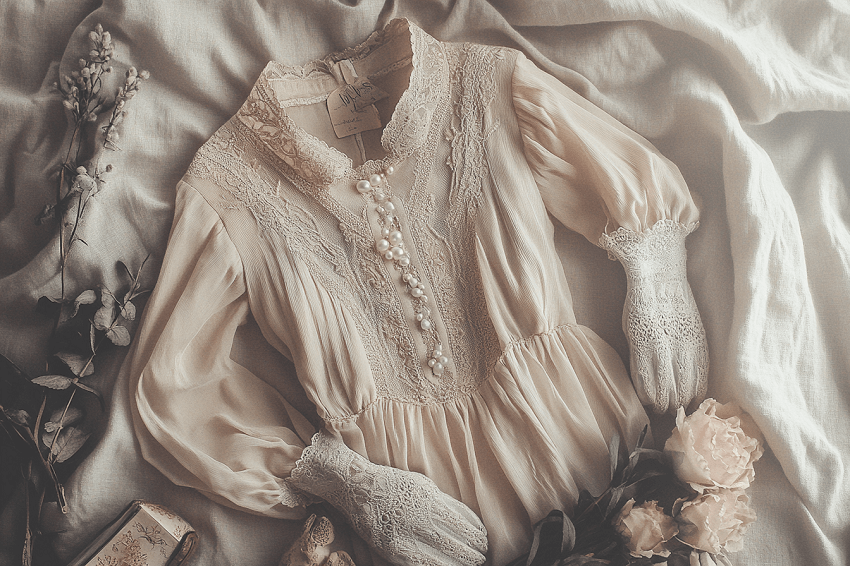
2. Studio Photography: Studio photography is conducted in a controlled environment with professional lighting and backdrops. This method provides a clean and cohesive look, ideal for catalog shoots or e-commerce websites. Photographers can use mannequins or models to display how garments fit and drape, ensuring that every detail is captured with precision.
3. Outdoor Photoshoots: Capturing clothing in natural settings adds a lifestyle element to the images. Outdoor photoshoots can convey movement and authenticity, allowing potential customers to envision themselves wearing the garments in real-life scenarios. However, they require careful planning to account for lighting conditions and environmental factors.
4. Model Photography: Using models is one of the most effective ways to showcase clothing because it allows customers to see how garments fit on different body types. This method can create an emotional connection with the audience, as models bring life to the clothing through poses and expressions. While it may be more logistically challenging, the impact of model photography is often worth the effort.
Part 2. Essential Equipment for Clothing Photography
To create stunning clothing photography, having the right equipment is crucial. While talent and creativity play significant roles, the tools you use can greatly influence the quality of your images. Here's a breakdown of the essential equipment every clothing photographer should consider:
1. Camera
The camera is the heart of your photography setup. While it's possible to take clothing product photos with a smartphone, investing in a DSLR or mirrorless camera will yield far superior results. Look for a camera with at least 24 megapixels and manual control over settings like aperture and shutter speed. This allows you to tailor your shots to specific lighting conditions and creative visions. Popular choices include the Canon EOS 5D Mark IV for DSLRs and the Sony Alpha a7 III for mirrorless options, both known for their excellent image quality and versatility.
2. Lenses
The choice of lens can dramatically affect how you capture clothing. A versatile 50mm lens (often referred to as the "nifty fifty") is ideal for portraits and full-length shots, while a 24-70mm zoom lens offers flexibility for various compositions. For detailed shots, consider using a macro lens or a longer focal length like 70-200mm, which allows you to capture intricate details from a distance without distortion.
3. Tripod
A sturdy tripod is essential for maintaining stability, particularly during long shoots or in low-light conditions. It helps eliminate camera shake, ensuring that your images are sharp and focused. Look for tripods with adjustable heights and angles, which can also free your hands to adjust clothing or interact with models during the shoot.
4. Lighting Equipment
Lighting is one of the most critical aspects of clothing photography. While natural light can be beautiful, it is often unpredictable. Investing in artificial lighting solutions like softboxes or LED panels can provide consistent, diffused light that minimizes harsh shadows and highlights. A dual mono light kit or strobe lights can be particularly effective for studio setups. Additionally, reflectors can help bounce light onto your subject, filling in shadows and adding dimension to your images.
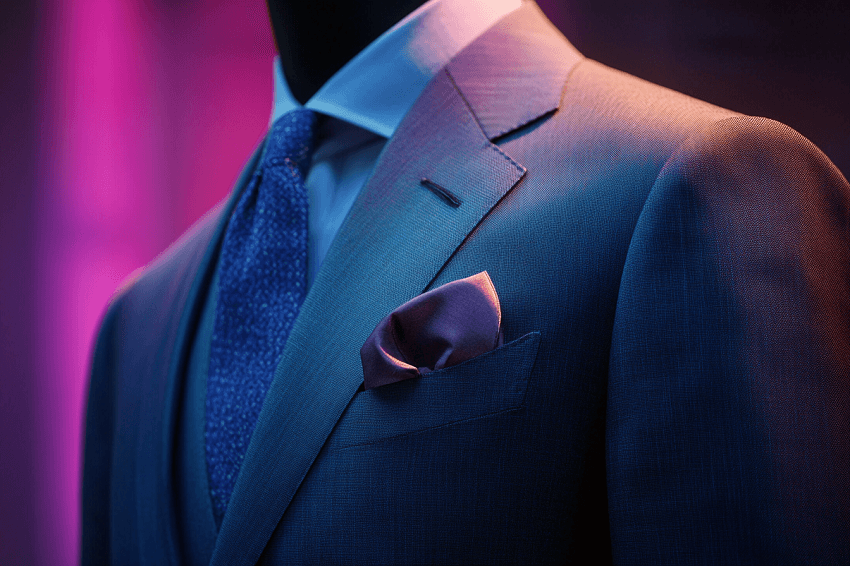
5. Backdrops and Props
Setting the stage is vital in clothing photography. Choose backdrops that complement your clothing without overwhelming it—solid colors often work best to keep the focus on the garments. Props can enhance storytelling; for example, using seasonal items like blankets for winter wear or beach accessories for summer collections can create an inviting atmosphere.
6. Mannequins and Models
To effectively showcase clothing, you'll need either mannequins or models. Mannequins are great for displaying individual pieces without distractions and allow you to achieve consistent looks across different products. Models bring life to garments, providing context on fit and movement. If using mannequins, consider transparent options that allow for seamless editing later on.
7. Photography Toolbox
Having a well-stocked photography toolbox can streamline your workflow significantly. Essential items include:
- Clips and pins: To secure garments in place.
- Steamers: For removing wrinkles before shooting.
- Tapes: For flat lay setups or securing fabric.
- Extra batteries and memory cards: Always have backups ready to avoid interruptions during shoots.
Part 3. Preparing for the Shoot
Preparation is key to successful clothing photography. A well-planned shoot not only saves time but also ensures that you capture the best possible images. Here are essential steps to consider when preparing for your clothing photography session:
1. Pre-Shoot Planning
Create a Mood Board: A mood board is a visual collage that helps you define the aesthetic and style of your shoot. Gather inspiration from magazines, online platforms like Pinterest, or previous campaigns. Include color palettes, poses, and styling ideas that resonate with your vision. This will serve as a reference point during your shoot, helping to maintain consistency and focus.
Develop a Shot List: A shot list outlines the specific images you want to capture during the session. Include details such as: types of shots (e.g., flat lays, full body, close-ups), angles and compositions, specific garments or outfits to feature.
Having a clear plan will keep you organized and ensure you don't overlook any important shots.
Location Scouting: If you're shooting outdoors or in a specific venue, visit the location beforehand to assess lighting conditions and potential backgrounds. Take note of how natural light changes throughout the day and identify areas that will work best for your shoot. If shooting in a studio, ensure that all equipment is set up properly and that you have access to necessary resources.
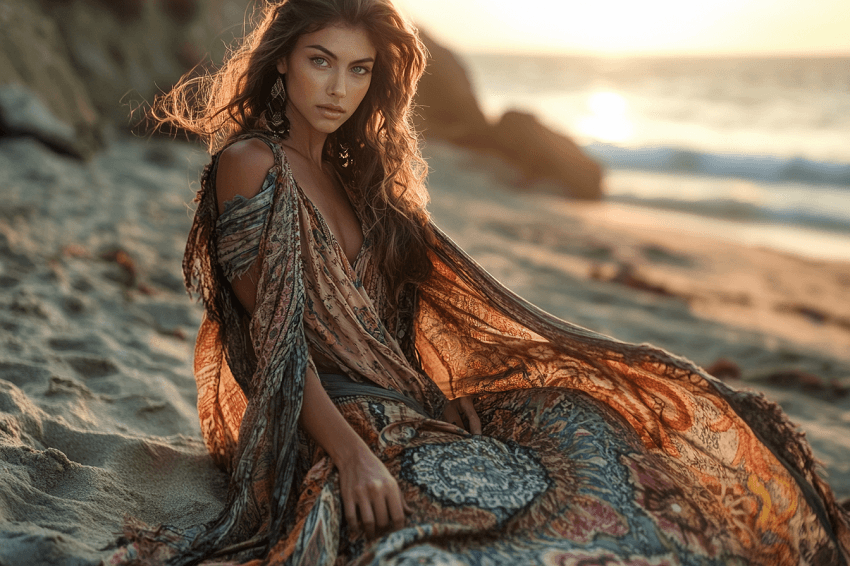
2. Garment Preparation
The presentation of clothing can make or break your photos. Here are some tips for ensuring garments look their best:
Cleaning and Steaming: Before the shoot, ensure all clothing items are clean and free from stains. Use a steamer to remove wrinkles, as even minor creases can be distracting in photographs. For delicate fabrics, consider using a fabric spray to help them maintain their shape.
Styling Considerations: Think about how each piece will be styled. Choose accessories, shoes, and props that complement the clothing without overshadowing it. If working with multiple outfits, plan how they will be presented together to create cohesive looks.
Fit Check: If using models, conduct fit checks beforehand to ensure that garments fit well and are comfortable for movement. This will help avoid any last-minute adjustments during the shoot, allowing models to focus on posing naturally.
3. Equipment Check
Before heading to your shoot location, double-check your equipment:
- Camera: Ensure it's fully charged and has enough memory space.
- Lenses: Pack the lenses you plan to use based on your shot list.
- Lighting Gear: Confirm that all lights are functioning properly and bring extra bulbs if necessary.
- Accessories: Don't forget reflectors, backdrops, props, and any other tools you'll need.
Part 4. Techniques for Capturing Stunning Images
Capturing stunning images in clothing photography requires a blend of technical skills and artistic creativity. By mastering various techniques, you can highlight the unique features of garments, create engaging compositions, and evoke emotions in your audience. Here are some essential techniques to elevate your clothing photography:
1. Composition Techniques
Rule of Thirds: The rule of thirds is a fundamental composition technique that divides your frame into nine equal parts using two horizontal and two vertical lines. Positioning your subject at the intersecting points creates a balanced and dynamic image. This technique draws the viewer's eye to the most important elements of the photo, making it visually engaging.
Leading Lines: Incorporating leading lines can add depth and direction to your images. Look for natural lines in your environment—such as pathways, railings, or architectural features—that lead the viewer's eye toward the clothing. This technique not only guides attention but also adds a sense of movement to your photographs.
Framing: Use elements in your surroundings to create a frame around your subject. This could be anything from doorways to branches or architectural details. Framing helps isolate the clothing from distractions and draws focus to the garment, enhancing its appeal.

2. Lighting Techniques
Natural Light: Utilizing natural light can produce beautiful results, especially during the golden hour—shortly after sunrise or before sunset—when the light is soft and warm. This flattering light can enhance colors and textures in clothing, making them appear more vibrant and appealing. Experiment with different angles; backlighting can create a dreamy effect, while side lighting adds depth and texture.
Artificial Lighting: When shooting indoors or in low-light conditions, invest in artificial lighting setups such as softboxes or LED panels. Positioning your lights at a 45-degree angle from your subject helps create dimension by casting soft shadows that enhance fabric details. Use reflectors to bounce light back onto the garment, filling in shadows and creating a more flattering look.
3. Angles and Perspectives
Experimenting with different angles can dramatically change how clothing is perceived in photographs. Shoot from above for flat lays or get down low for dramatic perspectives that emphasize height or flow in garments. Try capturing details from various heights and distances to showcase unique features like patterns or textures.
4. Styling and Context
The way clothing is styled within an image can significantly impact its appeal. Consider the context in which the garment will be worn—whether it's casual, formal, or somewhere in between—and style accordingly. Use props that complement but do not overshadow the clothing, creating a cohesive look that tells a story.
Part 5. Working with Models
In clothing photography, models play a crucial role in bringing garments to life. They provide context, demonstrate fit, and evoke emotions that resonate with potential customers. Successfully working with models requires effective communication, direction, and an understanding of how to capture their best angles. Here are some essential tips for collaborating with models in your clothing photography shoots:
1. Choosing the Right Models
Alignment with Brand Aesthetic: When selecting models, consider how their look aligns with your brand's identity. Models should reflect the target audience and embody the style and message you want to convey. Whether you're shooting high-fashion looks or casual wear, choose models whose appearance and demeanor fit the overall vision.
Diversity and Representation: In today's fashion landscape, diversity is more important than ever. Aim to include models of varying body types, ethnicities, and ages in your shoots. This not only broadens your audience but also promotes inclusivity, allowing more consumers to see themselves in your clothing.
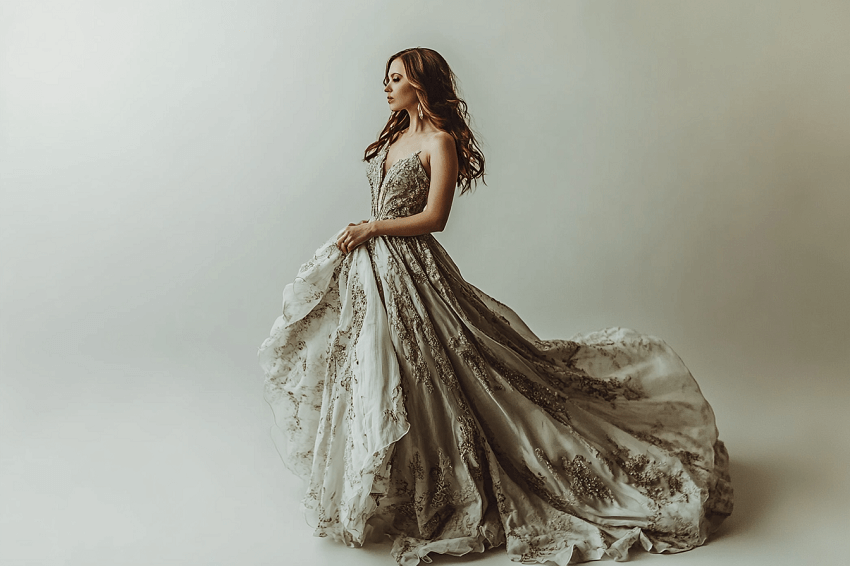
2. Directing Poses
Communicate Clearly: Effective communication is key to getting the best results from your models. Before the shoot begins, discuss the vision and specific poses you want to achieve. Share your mood board or shot list so that everyone is on the same page.
Encourage Natural Movement: While it's important to have a plan for poses, encourage models to move naturally. Candid moments often yield the most authentic expressions and dynamic shots. Prompt them to interact with their environment or adjust their poses slightly between shots for a more relaxed feel.
Provide Feedback: During the shoot, offer constructive feedback to help models adjust their poses or expressions. Use positive reinforcement to build confidence—compliment them when they hit a great pose or expression. This will create a comfortable atmosphere that encourages creativity.
3. Capturing Expressions
Engage with Your Models: Building rapport with your models can lead to more genuine expressions. Take time to chat and create a relaxed environment before shooting begins. Ask about their interests or share anecdotes related to the shoot; this can help them feel more at ease in front of the camera.
Use Music or Props: Incorporating music can lighten the mood and help models feel more comfortable. Alternatively, using props can give them something to interact with, making it easier for them to pose naturally without feeling stiff or posed.
4. Creating Dynamic Shots
Vary Angles and Distances: To capture a range of images, vary your angles and distances while photographing models. Shoot close-ups to highlight details like fabric texture or accessories, then step back for full-body shots that showcase the entire outfit. This variety will provide you with a diverse selection of images to choose from during editing.
Experiment with Movement: Encourage models to move during the shoot—walking, twirling, or adjusting their clothing can create dynamic images that convey energy and life. Capturing movement adds a sense of realism and context that static poses may lack.
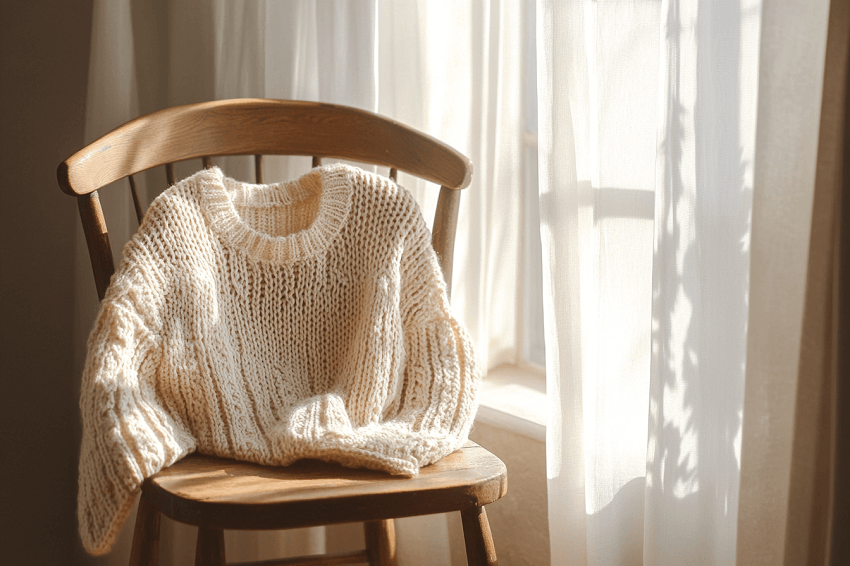
Part 6. Post-Processing Techniques
Post-processing is a vital step in clothing photography that can transform your raw images into polished, professional-looking photographs. This stage allows you to enhance colors, correct imperfections, and create a cohesive aesthetic that aligns with your brand. Here are some essential post-processing techniques to consider:
1. Choosing the Right Editing Software
Selecting the appropriate editing software is crucial for effective post-processing. Popular options include:
- Adobe Lightroom: Ideal for batch editing and color correction, Lightroom offers powerful tools for adjusting exposure, contrast, and saturation.
- Adobe Photoshop: Best for detailed retouching and advanced editing techniques, Photoshop allows you to manipulate images at a granular level. It's particularly useful for tasks like removing distractions or creating ghost mannequin effects.
2. Basic Adjustments
Exposure and Contrast: Start by adjusting the exposure to ensure that your images are well-lit without areas that are too bright or too dark. Follow this with contrast adjustments to add depth to your images, making sure that highlights and shadows are balanced. This step is essential for revealing intricate details in the clothing.
White Balance: Correcting the white balance is vital for achieving accurate colors in your images. Use the eyedropper tool in your editing software to select a neutral point in the image, which will help ensure that colors appear true to life. This is especially important in clothing photography, where color accuracy directly impacts customer perception.
3. Color Correction
Fine-tuning colors can enhance the visual appeal of your images. Adjust individual color channels to ensure that the clothing appears vibrant and true to its actual hue. Pay attention to skin tones if models are present; they should look natural and flattering.
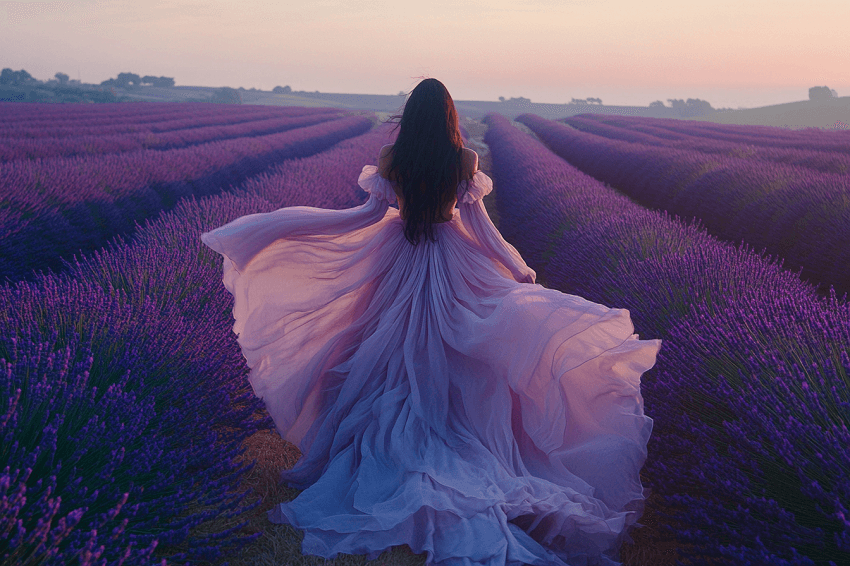
4. Retouching Techniques
Removing Imperfections: Use tools like the Healing Brush and Clone Stamp in Photoshop to remove blemishes or distractions from your images. This includes minor imperfections on clothing, such as lint or wrinkles that may have gone unnoticed during the shoot. Aim for subtlety; overly aggressive retouching can make garments look unrealistic.
Frequency Separation: For more advanced retouching, consider using frequency separation techniques. This method separates texture from color, allowing you to smooth out skin tones while preserving natural skin texture—ideal for fashion photography where models need to look polished yet authentic.
5. Advanced Techniques
Color Grading: Color grading involves manipulating hues and tones to create a specific mood or style within your images. By establishing a consistent color palette across a series of photographs, you can enhance the overall visual coherence of your fashion collection and evoke particular emotions in viewers.
Dodging and Burning: Using dodging and burning techniques allows you to sculpt light and shadow within your images, adding dimension and drama. Lighten areas of interest (dodging) while darkening less important sections (burning) to draw attention where it's needed most—this can be particularly effective in emphasizing garment details or model features.
6. Final Touches
Before finalizing your images, take a moment to assess them as a whole:
- Ensure consistency across all images in terms of color grading, exposure, and style.
- Crop images as necessary to focus on the clothing while maintaining appealing compositions.
- Save final versions in high-quality formats suitable for both web use (like JPEG) and print (like TIFF).
Part 7. Common Challenges and Solutions
Every photographer encounters challenges during clothing photography, whether it's dealing with lighting issues, fabric behavior, or model dynamics. Understanding these common obstacles and how to address them can significantly improve your results. Here are some typical challenges you may face, along with practical solutions:
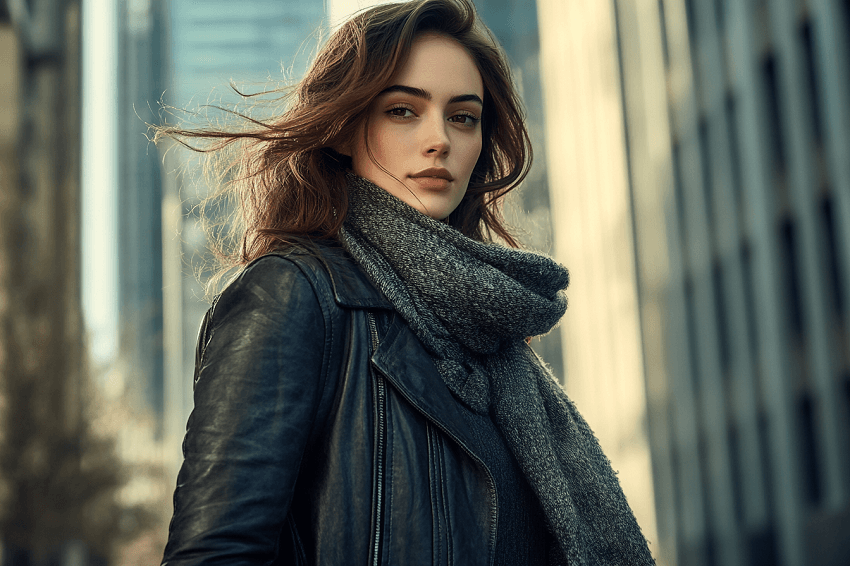
Challenge 1. Managing Wrinkles and Fabric Issues
Wrinkles, creases, and fabric behavior can detract from the overall appearance of clothing in photographs. Delicate fabrics may not hold their shape, while heavier materials can create unwanted bulk.
Solution:
- Preparation: Always steam or iron garments before the shoot to ensure they look crisp and polished. A handheld steamer is a quick and effective tool for removing wrinkles on-site.
- Fabric Supports: For delicate items, consider using fabric supports or weights to help garments drape naturally. Clips can also be used to secure clothing in place on mannequins or during flat lay setups.
Challenge 2. Lighting Challenges
Lighting can be unpredictable, especially when shooting outdoors or in varying indoor environments. Harsh shadows, overexposed highlights, or uneven lighting can compromise the quality of your images.
Solution:
- Use Diffusers: When shooting in natural light, use diffusers to soften harsh sunlight and reduce shadows. This can be as simple as using a white sheet or a professional diffusion panel.
- Control Artificial Light: If using artificial lights, experiment with softboxes or umbrellas to create even lighting. Adjust the position of your lights to minimize harsh shadows and create a flattering look.
Challenge 3. Inconsistent Color Representation
Colors may appear differently depending on lighting conditions or camera settings, leading to inconsistencies that can misrepresent the garment.
Solution:
- White Balance Settings: Always set your camera's white balance according to the lighting conditions (e.g., daylight, tungsten) to ensure accurate color representation.
- Test Shots: Take test shots before the actual shoot to check how colors are rendered. Make adjustments as needed based on these initial images.
Challenge 4. Directing Models
Getting models to pose naturally can be challenging, especially if they are inexperienced or nervous in front of the camera. Stiff poses can make images feel lifeless and unappealing.
Solution:
- Build Rapport: Take time to connect with models before the shoot begins. A relaxed atmosphere encourages more natural movements and expressions.
- Provide Clear Direction: Use clear and positive language when directing poses. Instead of saying what not to do (e.g., "Don't look stiff), guide them toward what you want (e.g., "Try shifting your weight onto one leg).
Challenge 5. Time Management
Time constraints can lead to rushed shoots, resulting in missed opportunities for great shots or inadequate coverage of all planned outfits.
Solution:
- Create a Schedule: Plan your shoot day with a detailed schedule that includes time allocations for each outfit and setup. Stick to this timeline as closely as possible while allowing some flexibility for unexpected delays.
- Prioritize Key Shots: Identify essential shots that must be captured first. Once those are secured, you can explore additional angles or styles if time permits.
Challenge 6. Post-Processing Overwhelm
Post-processing can be daunting, especially when dealing with a large number of images that need editing.
Solution:
- Organize Your Workflow: Develop a systematic approach to post-processing—import images into folders by date or project, and use software like Lightroom for batch processing similar images.
- Set Realistic Goals: Focus on editing key images first before tackling the entire batch. This helps prevent overwhelm and allows you to share standout photos sooner.

Part 8. The Role of Branding in Clothing Photography
Fashion photography is not merely about capturing beautiful images of clothing; it plays a pivotal role in shaping and communicating a brand's identity. Through visual storytelling, fashion photography conveys the essence, values, and aspirations of a brand, making it an essential tool for marketers and photographers alike. Here's how branding intertwines with clothing photography:
1. Visual Communication
Fashion photography serves as a visual language that communicates a brand's message without words. The style of imagery you choose—whether it's sleek and modern or warm and inviting—should reflect your brand's personality. For instance, luxury brands often use opulent settings and immaculate lighting to convey exclusivity and high quality, while more casual brands might opt for relatable, everyday environments to connect with their audience on a personal level.
2. Consistency is Key
Consistency across all visual content is crucial for effective brand identity. Your clothing photography should maintain a cohesive style—this includes color palettes, lighting techniques, and composition methods—across various platforms such as websites, social media, and advertising materials. A recognizable visual style helps reinforce your brand's presence in consumers' minds, making it easier for them to associate specific images with your brand.
3. Evoking Emotion and Aspiration
Great fashion photography goes beyond merely showcasing products; it aims to evoke emotions and aspirations in viewers. The images should inspire feelings such as desire, confidence, or curiosity. This emotional connection is powerful; it not only drives immediate sales but also fosters long-term loyalty among customers who resonate with the brand's story. For example, a campaign focused on sustainability might feature natural settings and eco-friendly materials to evoke feelings of responsibility and care for the planet.
4. Storytelling Through Imagery
Fashion photography is a powerful means of storytelling. By carefully selecting settings, models, and styling elements, photographers can create narratives that align with the brand's values and philosophy. For instance, a brand committed to urban living might showcase its clothing in bustling city environments, while a lifestyle brand focused on leisure could feature relaxed settings like parks or beaches. Each image contributes to a larger narrative that helps define the brand's identity.
5. Building Trust and Credibility
High-quality fashion photography builds trust with consumers. When customers see professionally crafted images that accurately represent products, they are more likely to believe in the quality of what they see. This trust extends beyond individual purchases; it shapes perceptions of the brand as a whole. Investing in skilled photographers who understand your vision ensures that your images effectively communicate your brand's dedication to quality.
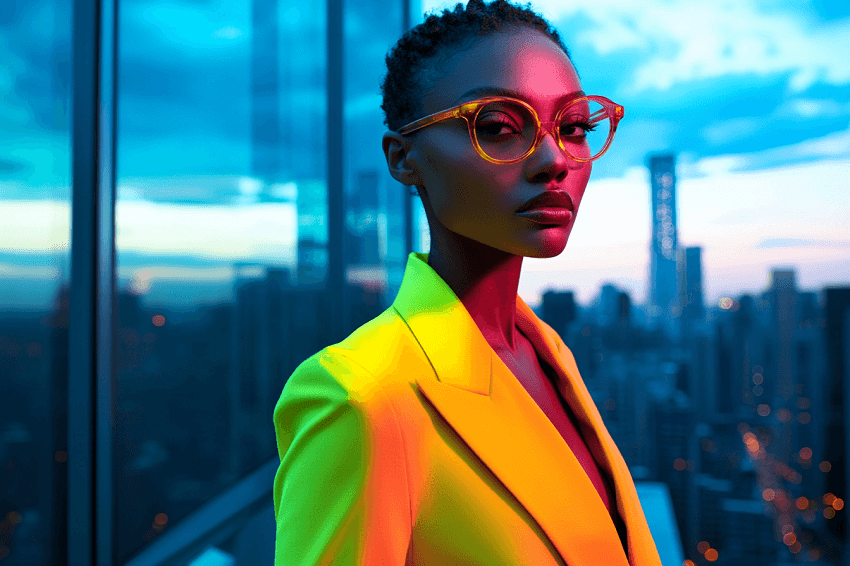
Part 9. Marketing Your Clothing Photography
Effective marketing is essential for showcasing your clothing photography and reaching your target audience. In a visually-driven industry like fashion, the way you present your images can significantly influence consumer behavior and brand perception. Here are key strategies to effectively market your clothing photography:
1. Building a Strong Online Portfolio
Your portfolio is often the first impression potential clients will have of your work. Ensure it is:
Visually Cohesive: Showcase a consistent style that reflects your unique approach to clothing photography. This helps establish your identity as a photographer and makes it easier for clients to recognize your work.
Diverse:Include a variety of shots—flat lays, on-model photography, and lifestyle images—to demonstrate your versatility and ability to cater to different branding needs.
User-Friendly: Make navigation easy on your website or platform, allowing visitors to quickly find examples relevant to their interests.
2. Leveraging Social Media
Social media platforms are powerful tools for promoting clothing photography. Consider the following strategies:
Visual Platforms: Focus on platforms like Instagram and Pinterest, where visual content thrives. Regularly post high-quality images that engage your audience.
Use Hashtags: Utilize relevant hashtags to increase visibility and reach a broader audience. Research trending hashtags in the fashion industry to ensure your posts gain traction.
Engage with Followers: Respond to comments, ask questions, and encourage feedback from followers. Building a community around your work fosters loyalty and encourages sharing.
3. Collaborating with Brands and Influencers
Partnering with fashion brands or influencers can enhance your visibility:
Brand Collaborations: Offer your services to emerging brands looking for quality photography. This not only builds your portfolio but also establishes relationships within the industry.
Influencer Partnerships: Work with influencers who align with your aesthetic. Their endorsement can introduce your work to their followers, expanding your reach.
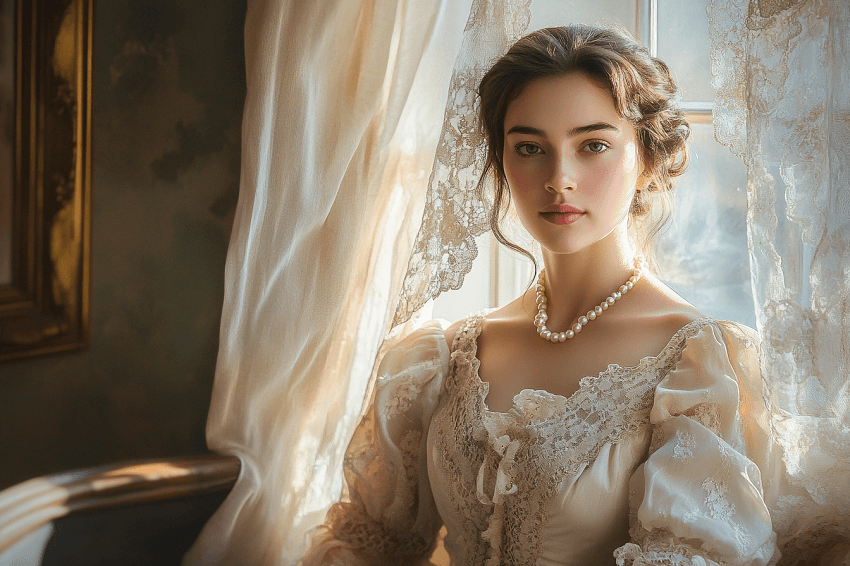
4. Utilizing E-commerce Platforms
If you're photographing clothing for e-commerce brands, ensure that images are optimized for online sales:
On-Model Photography: Showcase clothing on models to help customers visualize how items fit and drape on real bodies, which can significantly increase conversion rates.
Multiple Angles and Details: Provide multiple views of each product, including close-ups of unique features or textures. This transparency builds trust with potential buyers.
5. Creating Engaging Content
Beyond just posting photographs, consider creating additional content that engages your audience:
Behind-the-Scenes (BTS): Share BTS footage or stories from photoshoots to give followers insight into your creative process. This humanizes your brand and fosters a connection with viewers.
Styling Tips and Tutorials: Create blog posts or videos offering styling advice using the clothing you've photographed. This positions you as an authority in the fashion space while providing value to your audience.
6. Email Marketing Campaigns
Build an email list to keep potential clients updated on new projects, promotions, or services:
Newsletters: Regularly send out newsletters featuring recent work, upcoming shoots, or special offers. Include links to your portfolio and social media accounts.
Targeted Campaigns: Tailor content based on audience segments—such as fashion brands versus individual clients—to ensure relevance and engagement.
7. Networking within the Industry
Attend fashion events, trade shows, or local meetups to connect with other professionals in the industry:
Building Relationships: Networking can lead to referrals or collaborations that enhance your visibility.
Showcasing Your Work: Bring business cards or promotional materials showcasing your photography style to share with potential clients.
Conclusion
Clothing photography is an art form that goes beyond simply capturing garments; it is about storytelling, branding, and creating emotional connections with consumers. Throughout this guide, we've explored the essential elements of clothing photography, from understanding the basics and preparing for shoots to mastering techniques, working with models, and navigating the challenges that may arise.
As you embark on your journey in clothing photography, remember that preparation and creativity are your greatest allies. Invest in the right equipment, develop your unique style, and continuously refine your skills through practice and experimentation. Embrace the power of branding to communicate your vision effectively and engage your audience through compelling imagery.
Moreover, marketing your work strategically will help you reach potential clients and establish a strong presence in the fashion industry. By leveraging social media, building a cohesive portfolio, and fostering relationships within the community, you can elevate your photography career to new heights.

